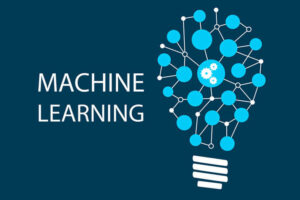
How Machine Learning is Changing Recruiting
Companies approach recruiting in different ways. Facebook’s method, for example, involves acquisitions for human capital and a six-week onboarding boot camp. Of course, that’s not the

Companies approach recruiting in different ways. Facebook’s method, for example, involves acquisitions for human capital and a six-week onboarding boot camp. Of course, that’s not the

“People make the ultimate difference” Bill McDermott, CEO SAP Even the best ideas can fail. Success is never guaranteed. It is dependent upon the talent,

Creating a world-class talent acquisition effort that incorporates cool recruiting ideas may seem unrealistic for many HR departments. After all, the pressure to fill the

The business world is headed for a leadership crisis. More and more baby boomers retire every day, and many companies lack future leaders who are

The growing need for recruitment automation tools has fueled the recent popularity in AI for recruiting. With hiring volume predicted to increase next year but recruiting teams

Want to make the right manufacturing hires? A 2016 MRI survey on recruiting found that 80 percent of all hires are mistakes that cost companies

Recruiting is made up of a million different moving pieces. Literally. And they’re not linear either; they constantly loop back and in on themselves. Some

Without a doubt, employee turnover is costly mistake and one that most companies can avoid with minimal effort, yet so many brands fail in this

During this week’s TalentCulture’s #WorkTrends event, we’re going to be discussing an important topic and one that we touch upon often given its impact on

Without a doubt, we are living in one of the most pivotal moments in history. Our current presidential administration is making lots of changes that

Without a doubt our current presidential administration is an interesting one. There are lots of changes taking place and as we speculate, many more will

There’s no doubt that hiring qualified people is important. Having top-notch talent who do quality work will help your organization reach its goals. Unfortunately, in

In today’s very competitive hiring environment, brands need to have a solid strategy for talent acquisition with forethought to the retention of desired talent. Speed
As technology advances and changes our workplaces, many pundits speculate on the trends that we need to be mindful of. Companies are developing global footprints
It’s no secret that there is a war going on… a tug of war to be exact. Companies are scrambling to find the best and
Many pundits in the HR and tech space are speculating on trends we need to be mindful of. Many anticipate the workplace as we know
Slack has created a name for itself as a tool for communication, collaboration, and file-sharing amongst team members in a business or organization. But did
Here’s what crystal clear in business today: poor customer service impacts customer retention, referrals and potential new business. Social media has given consumers an open
Hiring talent is not an easy job. During the different steps of the recruitment process, there are little tips and tricks that can help hiring
The world of recruiting and talent acquisition has evolved over the past few decades… and changes are predicted to continue well into the near future.
The world of recruiting and talent acquisition has evolved over the past few decades… and changes are predicted to continue well into the near future.
Are robots coming to work? Not entirely, but something that is going to be a game changer is about to take over the world of
There are more millennials among today’s applicants than any other generation, and they’ll be 75 percent of the workforce by 2025. On this week’s #WorkTrends
There are more millennials among today’s applicants than any other generation, and they’ll be 75 percent of the workforce by 2025. On this week’s show,
It’s happened to us all: That person—that star—the one who absolutely nailed their interview ends up being a dud. New hires end up in duds-ville